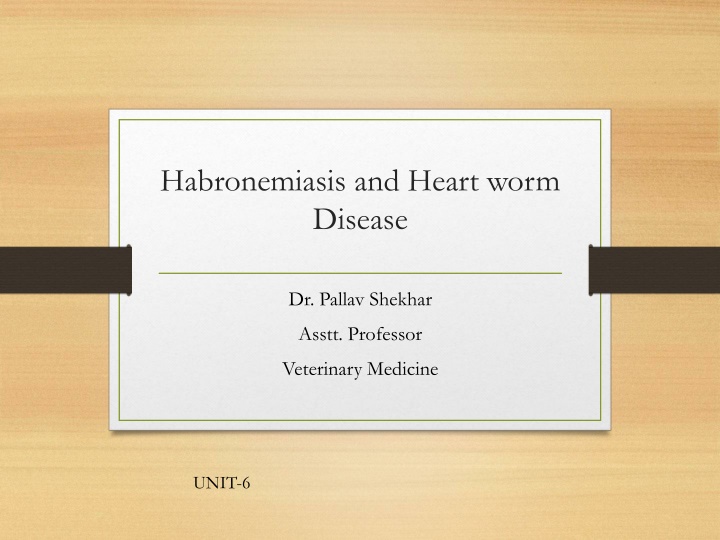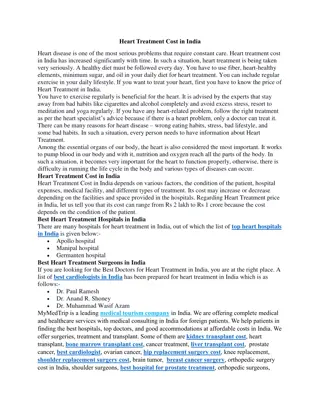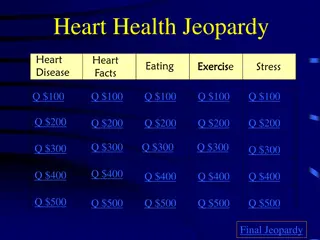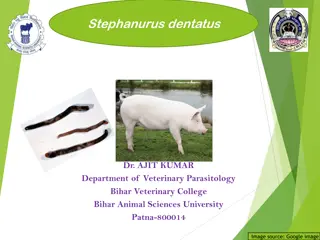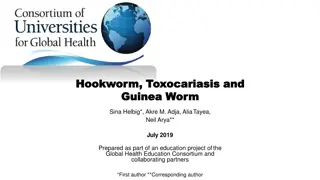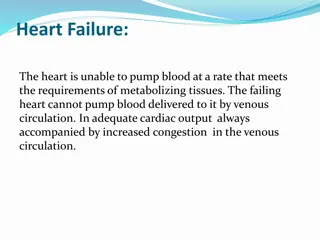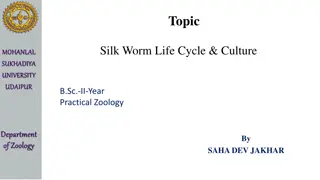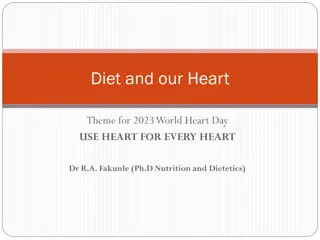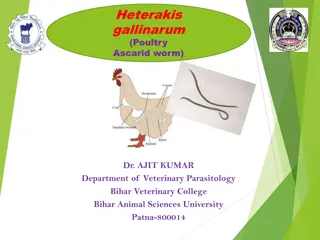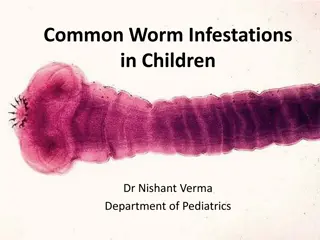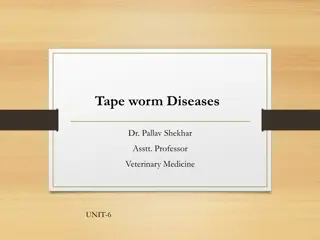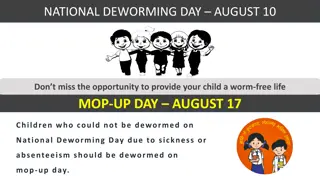Habronemiasis and Heart worm Disease
Habronemiasis and heartworm disease are prevalent in veterinary medicine. Habronemiasis, also known as swamp cancer, affects horses and has an indirect life cycle using flies as intermediate hosts. The disease manifests in gastric, cutaneous, and conjunctival forms. Treatment involves Ivermectin and Fenbendazole. On the other hand, canine heartworm disease, caused by Dirofilaria immitis, affects dogs, cats, foxes, and wolves, leading to right-sided heart failure. Understanding the etiology, pathogenesis, and treatment of these diseases is crucial for veterinary professionals.
Download Presentation

Please find below an Image/Link to download the presentation.
The content on the website is provided AS IS for your information and personal use only. It may not be sold, licensed, or shared on other websites without obtaining consent from the author.If you encounter any issues during the download, it is possible that the publisher has removed the file from their server.
You are allowed to download the files provided on this website for personal or commercial use, subject to the condition that they are used lawfully. All files are the property of their respective owners.
The content on the website is provided AS IS for your information and personal use only. It may not be sold, licensed, or shared on other websites without obtaining consent from the author.
E N D
Presentation Transcript
Habronemiasis and Heart worm Disease Dr. Pallav Shekhar Asstt. Professor Veterinary Medicine UNIT-6
Habronemiasis Swamp Cancer Summer Sore Bursattee
Etiology Habronema muscae Habronema majus
Indirect Life Cycle All parasite infect stomach of horse and have indirect life cycle. All spp. Use fly as intermediate host i.e H. muscae (House fly) and H. majus i.e (Stable fly).
Pathogenesis-1 (Gastric Habronemiasis) Habronema spp Larvae Gastric mucosa Development of large Granulomatus masses Tumor of Golf ball like
Pathogenesis-2 (Gastritis) H. majus and H. muscae do not produce tumor but cause catarrhal gastritis with the production of a chick tenacious mucus or ulceration.
Pathogenesis-3 Cutaneous Habronemiasis Also known as Swamp cancer or Summer sore Or Bursatee. It produces granulomatous lesion below the medial canthus of the eye and on the midline of the abdomen.
Pathogenesis-4 Conjunctival Habronemiasis 4. Conjunctival Habronemiasis It produces lesion on Nictating membrane . The lesion may be 5 mm diameter and characterized by profuse lacrimation.
Treatment Ivermectin @ 0.2 mg/Kg b.wt Fenbendazole @ 10mg/kg b.wt for 5 days
Canine heart Worm It is disease of dog, cats, foxes and wolves Etiology: Dirofilaria immitis It produces Rt. Sided heart failure leading to venous congestion, ascites and hydrothorax. The disease can occur in any age group of dogs. Found in Rt . Ventricle and pulmonary artery.
Pathogenesis or L/C-Indirect L1 larvae (microfilaria) Rt. Lay eggs Adult worm Atrium/Rt.Ventricle/Pul. Artery Circulation Peripheral L1 in mosquito Mosquito suck blood L3 larvae L3 through S/c or I/M Infective Mosquito Another dog Rt. Side of the heart and development into adult in 1-2 months Enters in blood
Pathogenesis Larvae in sub cutaneous tissue cause dermatitis and itching. Adult worm in heart cause impairment of blood flow from Rt. Auricle to Rt. Ventricle and to pulmonary artery to lung. Back flow of blood Ascites, Hydrothorax and Anasarca
Clinical findings Sudden death due to intra vascular hemorrhage Chronic coughing that increased after exercise Pot belly appearance Rapid breathing
Diagnosis Microfilaria in Blood Antigen test Thoracic Radiography Echocardiography
Treatment 1. Melarsomine- Adult worm Doxycycline 2. Moxidectin- Microfilariae Ivermectin Doxycycline Milbemycin
Prevention Ivermectin Milbemycin Selamectin Moxidectin
